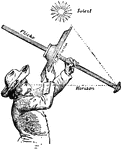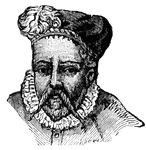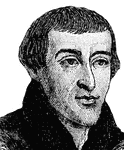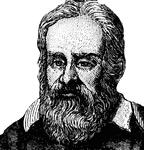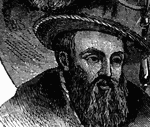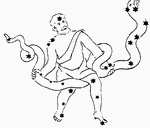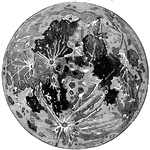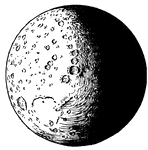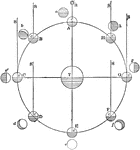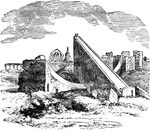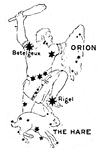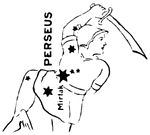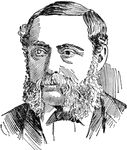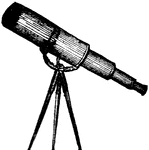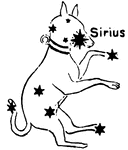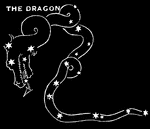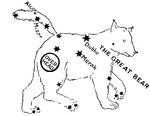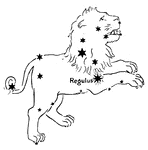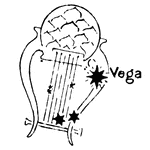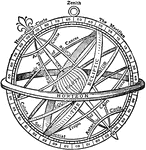
Armilla
"Armillary Sphere, an instrument used in astronomy. In its simplest form, consisting of a ring fixed…

Astrolabe
"Sir Francis Drake's Astrolabe; an obsolete astronomical instrument of different forms, used for taking…
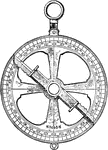
Later Astrolabe
A historical astronomical instrument used to predict positions of the Sun, Moon, planets and stars.

Regiomontanus' Astrolabe
A historical astronomical instrument used to predict positions of the Sun, Moon, planets and stars.
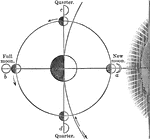
Cause of the Phases of the Moon
During new and full moon, the earth, moon, and sun are all in the same straight line, but, that during…

Astronomical Compass
The North Star (Polaris) varies so slightly from the true north that we may, for practical purposes,…

Nicolaus Copernicus
Nicolaus Copernicus (February 19, 1473 - May 24, 1543) was the first astronomer to formulate a scientifically…
Earth's Axis Perpendicular to Plane of Orbit
"The earth shown as it would be if its axis were perpendicular to the plane of the orbit." -Wiswell,…

Inclination of Earth's Axis
"A quadrant, or one fourth of a circle. The oblique lines indicate various angles with the base. The…
Spring Equinox and Autumn Equinox
"Relative positions of the earth and the sun on March 21 (spring equinox) and September 21 (autumn equinox)…

Gemini
"A zodiacal constellation, giving its name to a sign of the zodiac, lying east of Taurus, on the other…
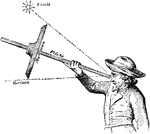
Jackstaff
An instrument which could more readily adapt itself to the swaying of the observer's body in a sea-way,…
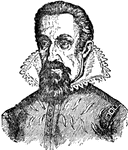
Johannes Kepler
Johannes Kepler (1571-1630) was a German mathematician, astronomer, and astrologer. A key figure in…
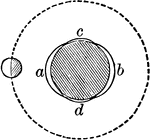
Lunar Tide
If the earth were uniformly covered with a layer of water, the passage of the moon over any place as…

Finding the North Star
"Two stars in the Big Dipper opposite the handle indicate the direction toward the North Star, which,…

Positions
The flood tides are the highest, and the ebb tides are the lowest. These are called spring tides.…

Ptolemy (Claudius Ptolemaeus)
Claudius Ptolemaeus, known as Ptolemy, was an ancient geographer, astrologer, and astronomer.
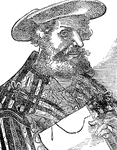
Ptolemy Holding a Document
Claudius Ptolemaeus, known as Ptolemy, was an ancient geographer, astrologer, and astronomer.

The Scorpio Constellation, with Libra
"The constellation which is prominent in early summer in the skies of the southern United States (where…

Seasons from Earth's Orbit
"Relative positions of the earth and the sun during the spring equinox, the summer solstice, the autumn…
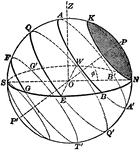
The Sphere of the Sky
"One standing at O will only see the half of the Sky which is above the circle NESW. The whole sky will…

Summer Solstice
"Relative positions of the earth and the sun on June 21, the summer solstice. Summer and long days north…

Winter Solstice
"Relative positions of the earth and the sun on December 21, the winter solstice. Winter and short days…
Telescope
"A telescope is an instrument designed for the observation of distant objects, and consists essentially…
!["These telescopes were all reflectors; that is, instead of looking up at a star through a tube with a glass in the upper end [Herschel] would look down into the tube away from the star and see its reflecting in a concave mirror at the lower end of the tube."—The Foundation Library, 1911](https://etc.usf.edu/clipart/79400/79403/79403_telescope_mth.gif)
A Great Reflecting Telescope
"These telescopes were all reflectors; that is, instead of looking up at a star through a tube with…
Galilean Telescope
"The Galilean telescope has a double-concave eye-lens that intercepts the rays before they reach the…
Reflecting Telescope
"The reflecting telescope has an objective a concave mirror, tecnically called a speculum. The images…
Terrestrial Telescope
"The spy-glass or terrestrial telescope avoids the inversion of the image by the interposition of two…

Zenith Telescope
Zenith telescope constructed at the International Stations at Berlin by Hermann Wanschaff.
